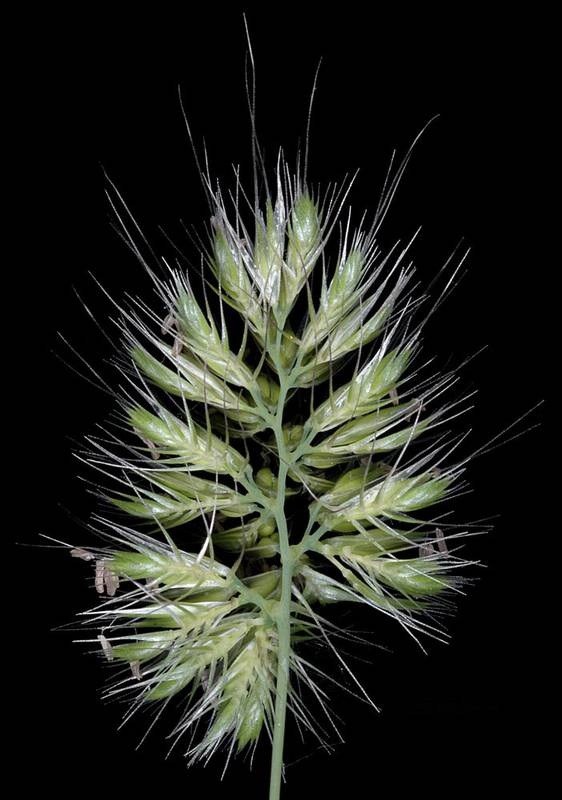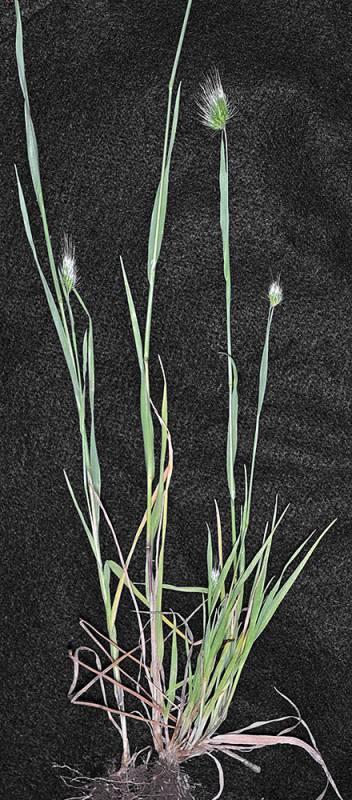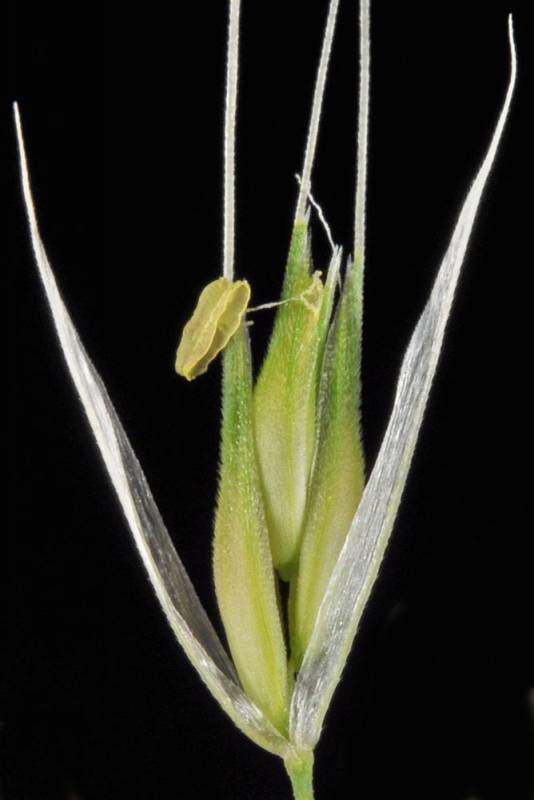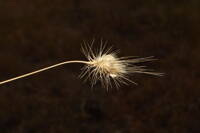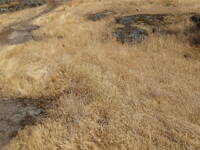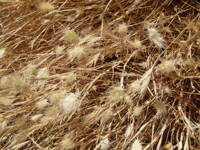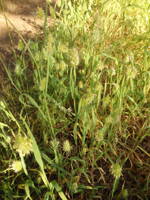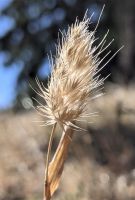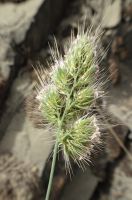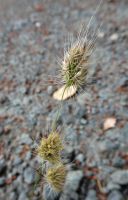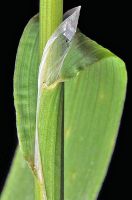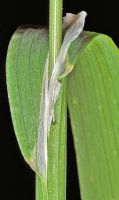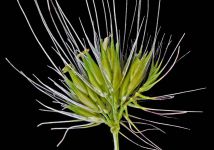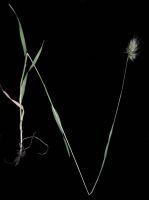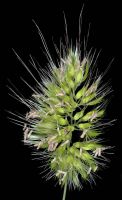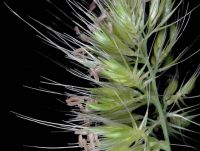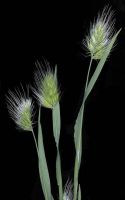Distribution: Occurring west of the Cascades crest in Washington; southwestern British Columbia to California, east across North America to the Atlantic Coast.
Habitat: Disturbed open areas, including roadsides, grasslands, and wastelots.
Flowers: May-July
Origin: Introduced from Eurasia
Growth Duration: Annual
Conservation Status: Not of concern
Pollination: Wind
Glabrous annual, the culms 2-5 dm. tall.
Sheaths open, inflated; ligules 2-7 mm. long, obtuse; blades flat, 2-5 mm. broad, the margins freed from the sheath at different levels.
Inflorescence a bristly, dense, ovoid panicle 1-4 cm. long; spikelets in pairs on very short branches, one spikelet fertile and sessile, the other short-pedicellate and sterile; sterile spikelet with several lemmas similar to the keeled, long-pointed glumes; fertile spikelet 2-flowered, the upper flower sometimes rudimentary; glumes strongly keeled and flattened, 5-6 mm. long, with awn tips 1-2.5 mm. long; lemmas somewhat lopsided, about 5 mm. long, rounded, with an awn 3-10 mm. long.
Publication: Sp. Pl. 1: 72. 1753. 1753.
PNW Herbaria: Specimen records of Cynosurus echinatus in the Consortium of Pacific Northwest Herbaria database
WA Flora Checklist: Cynosurus echinatus checklist entry
OregonFlora: Cynosurus echinatus information
E-Flora BC: Cynosurus echinatus atlas page
CalPhotos: Cynosurus echinatus photos

